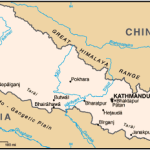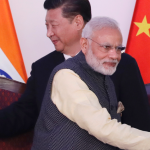It is not new, and I do not take pleasure in stressing it here, but the reality is that Nepal is geopolitically situated in a vulnerable position between the two powerful neighbours; China and India. The century-long security dilemma of Nepal continues to remain because it has been squeezed into as a ‘buffer state’ by these two competing powers who are equally dissimilar ideologically. Both have demonstrated the expansionist behaviours after the British left India in 1947; the former with the annexation of Tibet in 1951 and later of Sikkim in the Indian Union in 1975. Hence, Nepal’s declaration of the ‘zone of peace’, provided the interpretation of ‘non-alignment’ in 1975 amidst the growing geopolitical insecurity by these calculated moves by the northern and southern neighbours.
Nepal’s northern border with China along with the Himalaya has been historically (since British India) considered as its northern security parameter by India. India’s strategic vision for its security is that if other powers control Nepal, its proximity will jeopardise the security of India. However, for China, Nepal’s geostrategic significant lies, first and foremost, in its proximity to the Tibetan region. Therefore, Nepal constitutes a vital part of China’s inner security ring that cannot be spared to any other power. The former sees Nepal as its ‘sphere of influence’ because historically it has always been since the British Raj – and, it should continue as it had been whereas the latter considers the border along Nepal a ‘window of vulnerability’ as a result of its sensitiveness with the Tibetan issue – and, it has the potential to jeopardise China’s internal security. One can argue that as much as India regards the importance of Nepal as a strategic security partner, China shares the parallel vision.
For a small state like Nepal with weak relative power in such Great Power rivalry, it resorts to a strategy that helps to secure sovereignty, territories as well as political autonomy. One of the security strategies adopted by such state is ‘hedging’ which means the states adopt a ‘mixed strategy’ of both ‘balancing’ and ‘bandwagoning’ rather than choosing the pure form of one strategy – because, choosing the pure form is too risky. The uses of terms such as ‘yam’ by Prithivi Narayan, ‘zone of peace’ by Birendra and later, ‘bridge’ by various politicians in recent days interprets the acceptance of Nepal’s geopolitical dilemma by adopting the ‘hedging’ as a surviving strategy. However, the intention of Nepal taking on a ‘non-alignment’ foreign policy approach is highly debatable as Nepal’s foreign policy practice remains dubious, because of the domestic political interventions with the power to change the course of foreign policies.
Powerless to counter the challenges from outside, as well as unable to fulfil its traditional Westphalian role of the state by exerting best forms of foreign policy that serves the national interests; Nepal has almost become a moribund institution in places. Instead, Nepal has become a battleground for the competing interests of China and India, hence, the increasingly visible Sino-Indo rivalry in Nepal. These two rivalries have, and continue to trespass the independent decision-making capacity of Nepal to its foreign policy – and, what Nepal has done is, it has allowed them in doing so. It’s a failure of Nepal to prevent itself from exerting a robust foreign policy stance due to the pressure from neighbouring external powers.
As the Sino-Indo rivalry remains in large, Nepal continues to remain geopolitically vulnerable, however, how prudently Nepal calculates the rivalry by understanding its global context will help to mitigate its security dilemma in future.





Leave a Reply